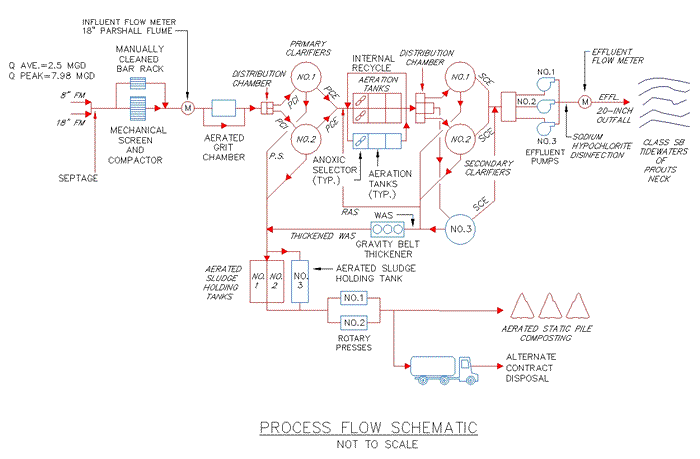What Scarborough Sanitary District Does
Your wastewater treatment facility (WWTF) is capable of treating an average of 2.5 million gallons per day (mgd) of raw sewage. It uses a process called "activated sludge" to treat wastewater. In the activated sludge process, microorganisms are used to remove waste products from the discharge stream. Read more...

Influent - step 1
Influent is the raw wastewater collected through a maze of sewer mains, which flow into the wastewater treatment plant.
Screening - step 2
Screening removes roots, rags, cans and large debris.
Grit Removal - step 3
Removes sand and gravel.
Primary Treatment - step 4
Sedimentation and flotation removes settleable and floatable materials.
Aeration - step 5
Large tanks where wastewater is introduced to aerobic bacteria to further break down wastewater. Wastewater continues to further treatment processes and sludge is removed to be refined into compost.
Sludge Treatment - step 6
Sludge moves to the sludge holding tank. Sludge material continues to dewatering process where liquid is recycled back to aeration process and sludge is prepared for composting.
Sludge Composting - step 7
Composting is achieved using the Aerated Static Pile method. Dewatered sludge is mixed in equal parts with wood ash and wood shavings. This mixture is aerated for 21 days then cured for an additional 21 days. Finished compost is then tested and sold locally.
Secondary Treatment - step 8
Secondary treatment removes suspended and dissolved solids and prepares treated wastewater for discharge.
Disinfection and Testing - step 9
Treated wastewater is disinfected before being released into the ocean.
Effluent - step 10
Effluent is wastewater, which has been treated and disinfected.